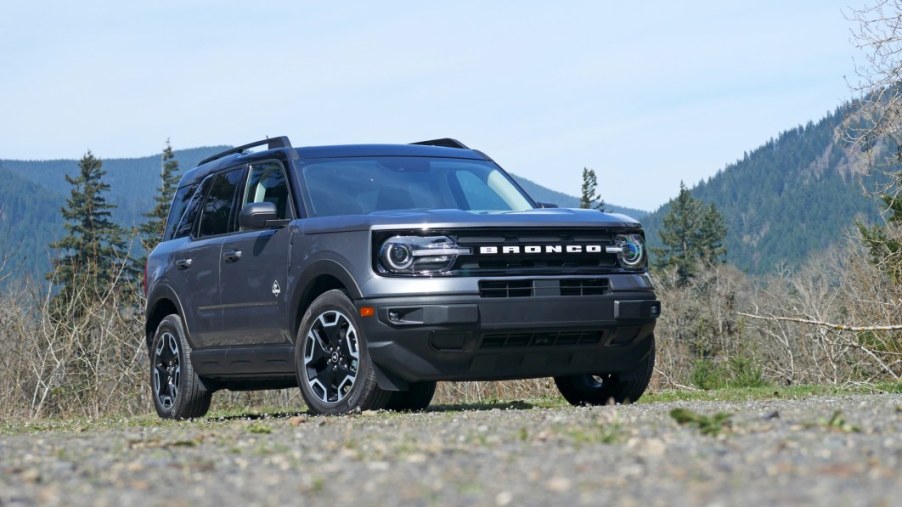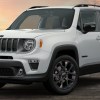
5 Crossovers That Can Actually Go Off-Road
A swarm has overtaken the automotive industry—an army of car-based crossovers. They’re practical; they’re spacious; they’re getting more efficient. But can they carry on the capabilities of their more primitive 4×4 lineage? Or are modern crossovers domesticated beyond hope for all-terrain fun? While many crossovers have become no more than taller family sedans, others still offer some surprisingly good off-road capability.
What’s the difference between a 4×4 and a crossover?
There are a few significant differences SUVs and crossovers. While they may look similar, their structures are much different. Each style has its performance strengths and weaknesses.
Traditional SUVs evolved from pickup trucks decades ago—think of the Chevy K5 Blazer or original Ford Bronco. They use the same kind of body-on-frame construction that trucks still use today.
Solid rear axles and leaf spring suspension setups have been common as well. It all comes together to make a more durable and capable off-road vehicle than the typical family car. However, truck-based SUVs also tend to be heavier, leading to sluggish on-road handling and worse fuel economy.
Crossovers arrived in the ’80s with the Jeep Wrangler XJ and other models. They differ from traditional SUVs in their use of unibody construction. It’s the same technique used in sedans, hatchbacks, and coupes, allowing for better on-road handling and comfort.
Plus, unibody designs help save weight for fuel-efficiency gains. They’re generally preferred for commuting, city use, and family driving. Unibody crossovers are known for delivering worse off-road capabilities than their ladder-frame counterparts. However, some crossovers on the market can still keep up on the trails.
1. Jeep Renegade Trailhawk
The Jeep Renegade may share some DNA with Fiat, but Jeep has fine-tuned its compact crossover for all-terrain use—the Renegade Trailhawk trim, in particular, punches above its weight. Car and Driver reports that the Trailhawk trim gets underbody protection, all-terrain tires, and standard four-wheel drive. It also looks the part of an off-roader with its classic Jeep-brand styling cues.
2. Subaru Outback Wilderness
Subaru’s familiar family wagon has always been known for excellent performance in snow and mud. Its standard symmetrical all-wheel drive system has been a boon for cold-climate drivers. But Subaru has upped its game with the new Outback Wilderness trim, improving an already capable vehicle with all-terrain tires and higher ground clearance. A more aggressive appearance package doesn’t hurt the wagon’s likable factor either.
3. Ford Bronco Sport
When Ford rolled out its resurrected Bronco brand a couple of years ago, it knew it couldn’t rely solely on sales of a traditional body-on-frame 4×4. So alongside the new Bronco, Ford released the Escape-based Bronco Sport.
While it shares a platform with the pedestrian Escape, the Bronco Sport offers far better off-road performance. Standard four-wheel drive, trail-friendly dimensions, and a plethora of trims and options make it a potent all-terrain vehicle. It’s a great way to get adventurous style and performance with better daily driving characteristics than the bigger Bronco.
4. Range Rover Sport
While Land Rover’s brand may have evolved into glamorous luxury, its roots remain in purpose-built off-road vehicles. Its new crossovers, like the Range Rover Sport, continue to honor that lineage with some of the best off-road engineering and technology on the market. Despite its more urban appearance, the Range Rover Sport can hang with the best off-roaders.
5. Toyota RAV4 TRD Off-Road
Toyota’s best-selling model has always been a practical little billy goat of a crossover. But its new RAV4 TRD Off-Road trim gives it some genuine off-road chops. Standard all-wheel drive, higher ground clearance, and all-terrain tires mean the RAV4 TRD Off-Road can handle more than just a little snow and dirt.
Can crossovers go off-road?
Crossovers don’t have the same kind of rugged underpinnings as their 4×4 SUV counterparts. However, with proper equipment and technology, manufacturers have brought them close. With enough ground clearance, a decent all-wheel drive system, and some good tires, any crossover ought to be able to handle some all-terrain activities. But you might want to avoid more extreme stuff like the Rubicon Trail in Colorado or Hell’s Revenge in Utah.


